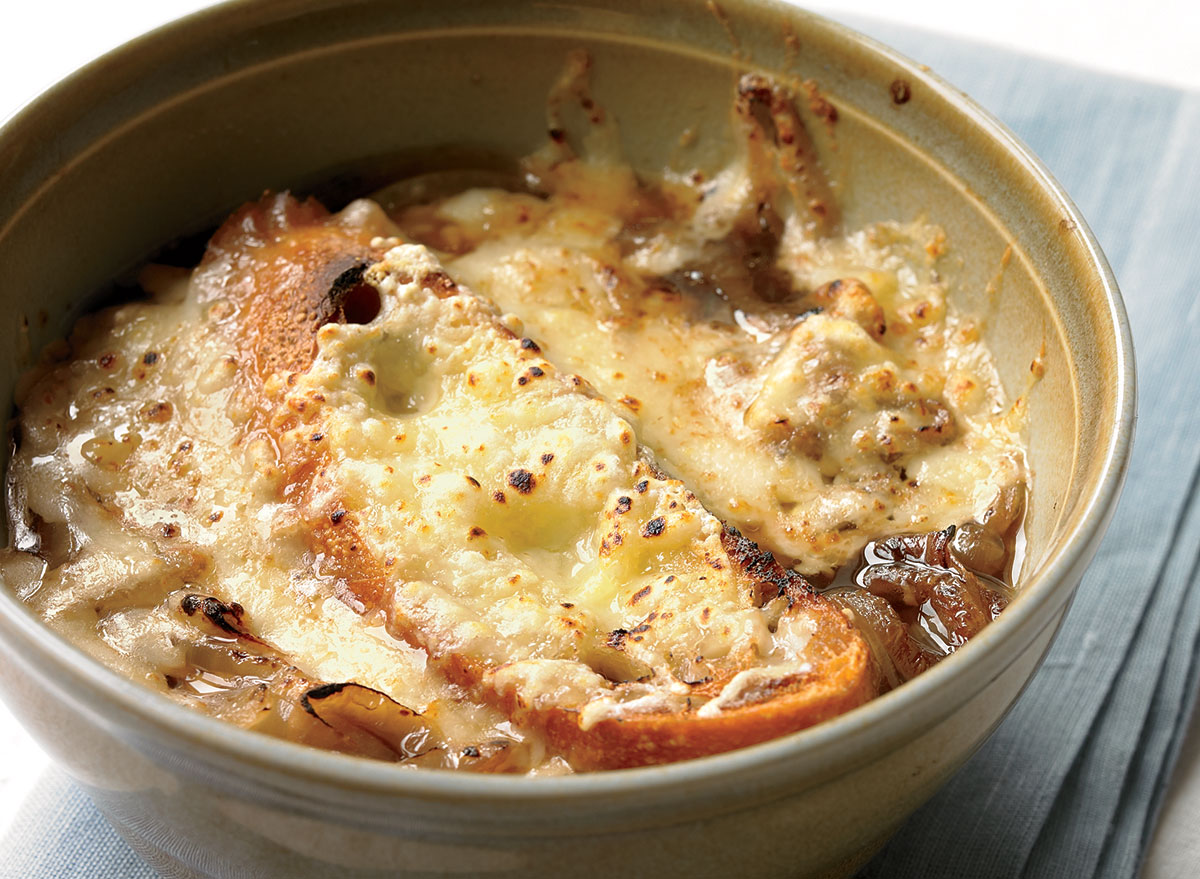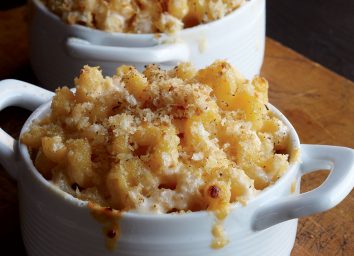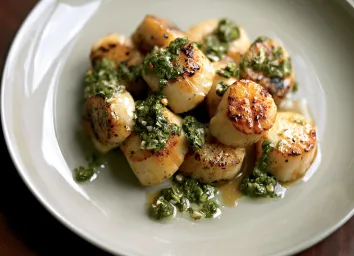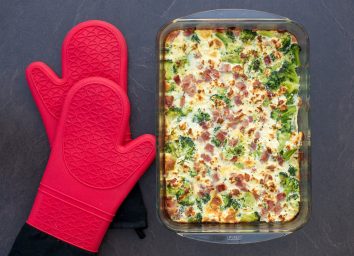Best-Ever French Onion Soup Recipe

We're not going to lie: Good French onion soup takes time. But it takes almost no true effort, other than fighting back the tears as you chop your way through the five onions in the recipe. And wouldn't you rather deal with a few errant tears than with a lackluster, overpriced bowl of soup at a restaurant that can pack as much saturated fat as 20 strips of bacon and more sodium than nine bags of Lay's potato chips? Now that's a real reason to cry. Our healthier homemade version is the perfect comfort food that rings in at less than 250 calories.
Nutrition: 230 calories, 8 g fat (4 g saturated), 720 mg sodium
Serves 4
You'll Need
1 Tbsp butter
5 medium onions (a mix of yellow and red is ideal), sliced
1⁄2 tsp salt
2 bay leaves
6 cups low-sodium beef broth (Chicken and vegetable broths are fine, too, but beef broth is best for bringing out the rich meatiness of the onions.)
1⁄2 cup dry red wine
4 or 5 sprigs fresh thyme (optional)
Freshly cracked pepper
4 slices of baguette or sourdough bread
1⁄2 cup shredded Swiss cheese
How to Make It
- Heat the butter in a large pot over low heat. Add the onions and salt.
- Cover the pot and cook the onions over low heat until very soft and caramelized, about 30 minutes. (Most of this is unsupervised. Check on the onions every 10 minutes or so and stir.)
- Add the bay leaves, broth, wine, and thyme (if using).
- Simmer on low heat for at least 15 minutes. Season with pepper. Discard the bay leaves.
- Preheat the broiler. Divide the soup among 4 oven-proof bowls.
- Top each with a slice of baguette and some cheese. Broil until the cheese is melted and bubbling, about 3 minutes.
Eat This Tip
Precision Salting
Salt comes in dozens of shapes, sizes, and colors, but really it all comes down to three varieties: iodized salt (fine salt for use at the table), flaky sea salt (its crunchy texture is best used on cooked dishes like grilled steak and fish), pink Himalayan salt, fancy truffle salt, and, most important, kosher salt. Chefs use kosher salt to season dishes as they're cooking because the coarse crystals allow them to season with precision. You should do the same, always using your hands (never a shaker!) to season.








